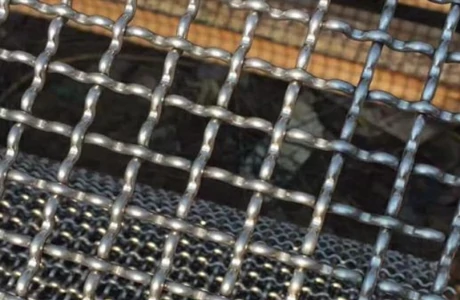wire cloth
Understanding Wire Cloth A Versatile Material for Various Applications
Wire cloth, also known as wire mesh or wire screen, is an essential material that finds widespread use across numerous industries and applications. Composed of intertwined strands of wire, it exhibits a unique combination of strength, flexibility, and filtration capabilities. This article will explore the characteristics, manufacturing processes, applications, and benefits of wire cloth, illustrating its significance in modern industry.
Characteristics of Wire Cloth
Wire cloth is primarily made from different types of metals, including stainless steel, aluminum, brass, and carbon steel. Each type of metal brings its own set of properties, making wire cloth suitable for a variety of applications. For instance, stainless steel wire cloth is known for its corrosion resistance, making it ideal for environments exposed to moisture, chemicals, and harsh conditions. Meanwhile, aluminum wire cloth is lightweight and resistant to oxidation, which makes it a preferred choice in applications requiring minimal weight without sacrificing structural integrity.
One of the most important characteristics of wire cloth is its openness and various mesh sizes. Wire cloth is categorized based on its weave pattern, wire diameter, and mesh opening, which is measured in terms of the number of openings per inch. The choice of mesh size significantly influences the filtration capacity of the material; smaller openings allow for finer filtration, while larger openings enable better airflow.
Manufacturing Processes
The manufacturing of wire cloth begins with the selection of high-quality wire, which is then woven together using various techniques to create the desired mesh structure. The two primary weaving techniques are plain weave and twill weave. In a plain weave, the wire strands cross over and under each other alternately, creating a straightforward mesh pattern that is strong and stable. Twill weave, on the other hand, uses a more complex pattern, resulting in a more flexible and durable mesh that can handle higher levels of stress.
After weaving, wire cloth can undergo additional processes such as coating, treatment, or finishing to enhance its properties. For example, galvanized coatings can be applied to enhance corrosion resistance, while anodizing can be used for aluminum wire cloth to improve its surface hardness and durability.
Applications of Wire Cloth
Wire cloth is extremely versatile and is employed in various industries, including manufacturing, construction, agriculture, food processing, and environmental applications. Here are some notable applications
wire cloth

1. Filtration and Separation Wire cloth is widely used for filtration purposes in water treatment plants, food processing, and chemical industries. Its ability to create precise filtration results helps in separating solids from liquids, ensuring product purity.
2. Safety and Security Wire mesh can serve as protective barriers in industrial environments, preventing the entry of debris or unwanted animals. It is commonly used in construction sites, fencing, and security screens for windows and doors.
3. Cages and Containers In agriculture, wire cloth is used to create cages for poultry, fish, and small animals. The mesh promotes airflow while safeguarding animals from predators.
4. Architectural Applications Wire cloth adds aesthetic value to architectural designs, providing decorative screens, façades, and sunshades. It allows natural light to permeate while offering shade and visual appeal.
5. Electromagnetic Shielding In the electronics industry, specialized wire cloth can be used for electromagnetic shielding, preventing interference in sensitive equipment.
Benefits of Wire Cloth
The use of wire cloth carries numerous benefits. Its durability and strength make it a reliable choice for demanding applications. Furthermore, wire cloth is customizable; it can be tailored to meet specific requirements in terms of mesh size, coating, and weaving patterns. This adaptability makes wire cloth an excellent solution for unique or specialized needs.
Additionally, wire cloth is relatively easy to maintain. Its robust nature tends to resist wear, and when maintenance is required, cleaning or replacing sections of wire cloth is a straightforward process. Its longevity often leads to reduced operational costs, ultimately benefiting businesses using this material.
Conclusion
In summary, wire cloth is a versatile material that plays a crucial role across various sectors thanks to its unique characteristics, manufacturing flexibility, and wide range of applications. Whether used for filtration, safety, architectural design, or other purposes, wire cloth showcases the importance of adaptable materials in meeting modern industrial challenges. As industries continue to evolve, the demand for reliable and efficient solutions like wire cloth is only expected to grow, solidifying its place in the manufacturing and construction ecosystems.
-
Space-Saving Chain Fence Hacks Vertical Gardening with Cyclone MeshNewsJul.16,2025
-
Innovations in Iron Nail Wire Production for Modern ConstructionNewsJul.16,2025
-
Creative Uses of Wire Netting Fence in Modern Landscape DesignNewsJul.16,2025
-
Barbed Wire Fence Innovations in Anti-Climb TechnologyNewsJul.16,2025
-
Architectural Uses of Umbrella Nails for Aesthetic Roof DesignsNewsJul.16,2025
-
Architectural Uses of Razor Barbed Wire in Secure Urban DesignNewsJul.16,2025




